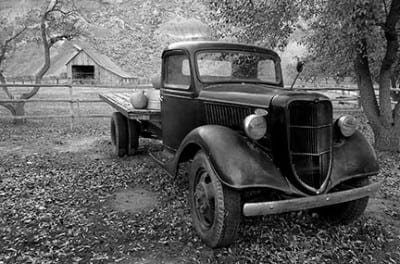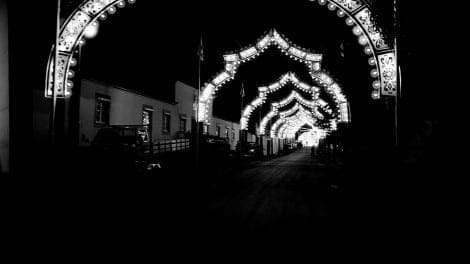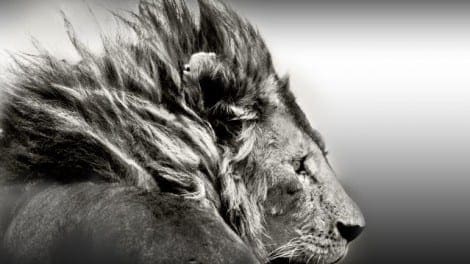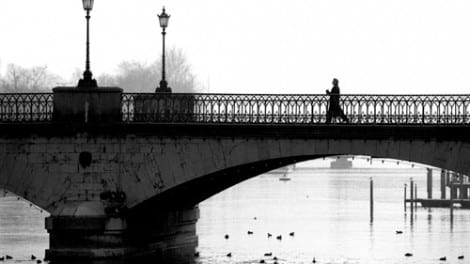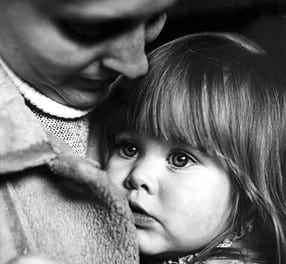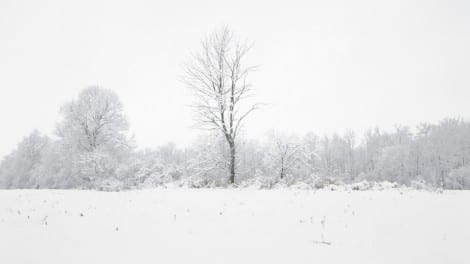Black & White Photography Tips
Black & White is a Click Away
When photography was invented, B&W was the only game in town. As it evolved, so did addressing the quality of the print. Getting a wide range of tones from pure white to pure black was the goal of every good photographer and darkroom worker. It finally evolved into an art form and grew in popularity. Many B&W masters shunned color photography when it was introduced. But as color grew in popularity, B&W began to take a back seat and was left to the truly dedicated. Thankfully, with the advent of digital cameras, B&W is making a huge resurgence. © Russ Burden A black and white image is as close as a menu click away on your point and shoot. Access the Record Menu on the back of your camera and navigate to the Color Mode or Film Equivalent setting. Check your manual to see what it’s called. Simply click on the setting that says B&W and you’re off to a world of colorless wonder. Experiment, play, and simply have fun. Capture the kids, an architectural subject, a day at the beach, a hike, a bike ride or simply a shot in the back yard. Incorporate shadows into your subjects as they play an important role in B&W captures. The next time you’re at a wedding, make some B&W images of the bride and she’ll love them. Some cameras even have a sepia setting - translation = bonus. Give it a whirl. © Russ Burden If you prefer to photograph in color, there are many software programs that allow you to easily convert the file to B&W. Chances are the software that comes with your camera allows this. If not, you can always use Photoshop or Photoshop Elements. Both provide tools that produce museum quality B&W images. In Photoshop, there’s a fantastic adjustment layer that enables you to lighten or darken specific colors of the original color capture. I think about the hours I spent in the darkroom to come up with a print about which I could feel proud. Now, with a few mouse clicks and a couple of minutes, I get the same result.
Drama in Black and White
© Adam Stoltman Use Black and White for Drama this night scene of carnival lights in a small village in Portugal is considerably more dramatic than it would be were color values competing with one another. The starkness of the contrast between the two basic tones of Black and White give the image its power, and its mystery.
B&W in the Serengeti
© Bobbie Goodrich This photo was taken in Serengeti National Park in Tanzania. Tihs image was originally a color photo, taken mid day in bright sunlite and it was overexposed. I fixed exposure and noise issues in NIK software and converted the image to black & white using Silver Efex NIK software and eliminated the blown out background with a gradient in photoshop.
In B&W Less is More
© Michael Hart Black and white can give you very powerful images if you′ll remember that "less is more.." That is, in the absence of color information, strong graphics, and rich blacks and whites, will convey the emotion and strength that you′ve lost by not having color. Sometimes, color is the subject; when things are in black-and-white, you rely more on the strong graphics in your composition to attract the viewer in to your image.
Portraits in B&W
© Milton Heiberg The main reason I prefer black and white for portraits of people is that it eliminates the distraction of color from facial expressions. For example, brightly colored clothing that would have attracted more of the viewer’s attention than facial characteristics is no longer an issue. Eliminating the color in this image allows the viewer to focus on the subjects mood and concentration.
Landscapes in Black & White
© Alex Lippisch Having grown up here in Ohio, I am visually drawn to old barns and farm landscapes like this one. A 70 mm lens on my 35 mm full-frame camera, allowed me to capture the wide expanse, but more importantly it gave me the right amount of perspective to create the look I was after. The size relationship between the corn in the foreground and the barn is slightly exaggerated and, for me, interesting as a contrast. The large amount of sky and corn field, sets up an engaging negative space as well. Since the sensor in digital cameras captures a 3 channel color image, I always use the camera′s color mode (instead of the B&W mode) and save it as a RAW file. For this image I made the conversion to B&W in ACR (Adobe Camera Raw). ACR has an incredible selection of adjustment options for how to process a RAW file to B&W (otherwise known as grayscale). I used the Hue and Saturation sliders to darken the sky and barn surfaces, and lighten the corn, for an almost infrared photo look common back in the days of shooting infrared film. Other ACR adjustments were made to the contrast, brightness, and sharpness of the final image.
Think About a World Without Color
Oh for the days of black and white film. Well, even with digital color sensors you can still see in black and white (sort of). A good way to think about the use of color in your photographs is to think about the world without color. Try removing most of the color from your image, not in “Photoshop” but on location. A gray, foggy day will give you the sense of being without much color, as will some subjects like a subway station or a white tiled bathroom. Try looking and finding how much is out in the world that is predominately black, white & gray. Then try adding one primary color to you images. Shoot for a set time period looking for black, white, gray and then add either red, green or blue. These three are the primary additive colors from which all other colors are made. If you can learn to see them you can learn to use them in your compositions.

